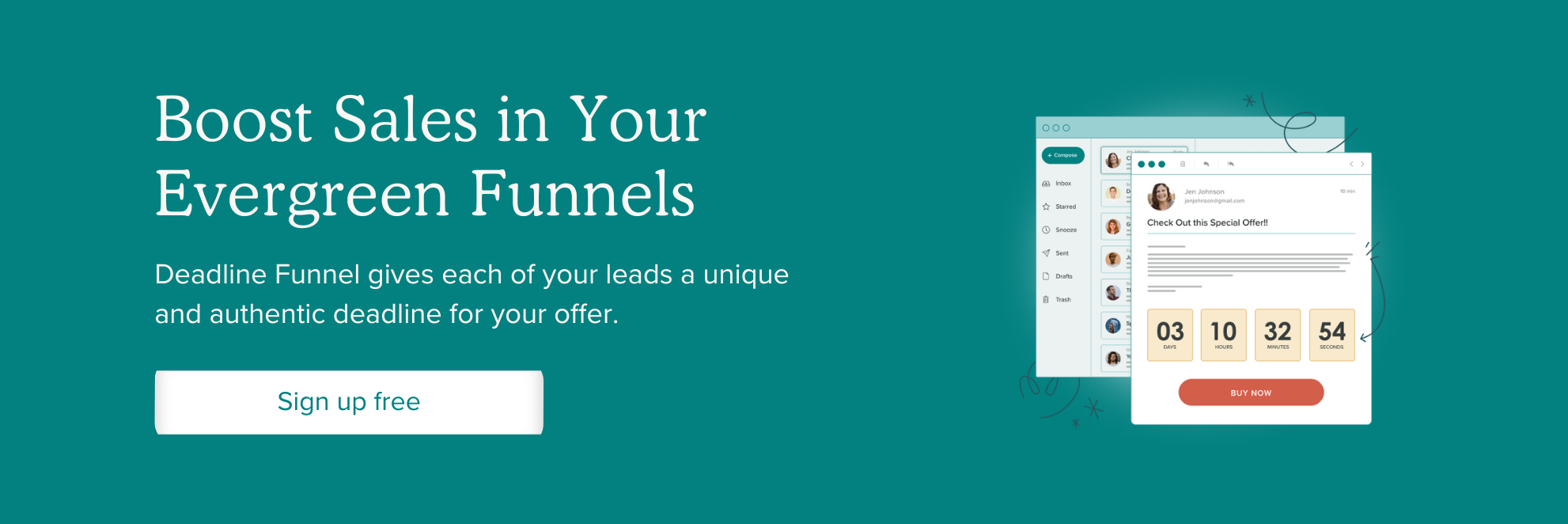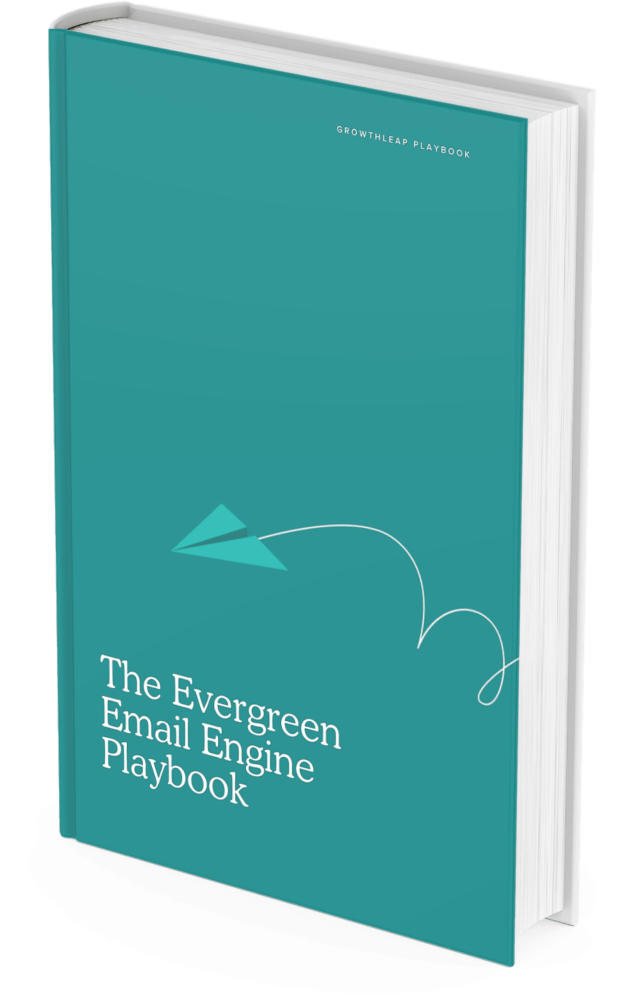
Imagine you’re looking for a new restaurant, and you pass by two places. One that’s packed with people and another just across the street that’s empty. Which one would you choose? Most likely the busy one. Why? Because you see people around you choosing the first restaurant, and it gives you confidence that the food there must be good. This is a perfect example of social proof in action.
Social proof in marketing is a psychological concept where people look at others to guide their decisions, especially when unsure about something. It’s the idea that if other people are using a product or service and are happy with it, you would be, too.
In this article, we will take a deep dive into social proof and explore;
- The different types of social proof and how they influence consumer behavior;
- How brands can incorporate social proof in their marketing strategies;
- And real-world examples of brands that have successfully incorporated social proof into their campaigns.
So, without further ado, let’s get started.
What is Social Proof?
Social proof refers to the idea that people copy others’ actions to be able to make the right decisions in unfamiliar situations. This is because they think the people around them are more knowledgeable about a given situation than they are. The term was first introduced in 1984 by Robert Cialdini in his book “Influence: The Psychology of Persuasion.”
In very simple words, humans tend and like to follow examples. For instance, you are more likely to buy a specific product because your best friend, relative, or colleague can’t stop raving about it, to watch a movie because it has great reviews, or to dine at a new restaurant that always seems to be crowded. You are constantly taking clues from people around you to ensure you fit in and act the right way.
Social proof in marketing refers to a similar idea–people are influenced by other’s actions, opinions, and recommendations before making decisions. When potential customers see that people are buying and loving your product, they’re more likely to trust and try it themselves.
Social proof is particularly important for new brands or products because it helps reduce the natural anxiety customers feel when trying something unfamiliar. When people see that others have had a positive experience, it eases their concerns and makes them more confident in giving the brand or product a chance. Without this reassurance, many customers might hesitate to purchase, especially from a brand they don’t know much about.
Why Social Proof Works
Social proof is a fantastic tool for marketing and sales professionals. It is like saying, “Look, others have taken the leap and loved it—so you probably will too!” In the present world, where customers have endless options, building this trust is key to standing out and driving sales. Here are more reasons to incorporate social proof into your marketing strategy.
- 88% of consumers trust user reviews as much as personal recommendations.
- 95% of consumers read online reviews before making a purchase.
- The average consumer reads 10 online reviews before making a purchase decision.
- 57% of consumers will only buy or use a business offering with at least a 4-star rating.
Types of Social Proof
Now that you know social proof can improve your business ROI, how do you incorporate it into your marketing strategy? The rule of thumb is to identify the right types of social proof for your business. Here are six forms of social proof that can make a difference to your marketing efforts.
Customer Testimonials and Reviews
How often do you buy new products without reading reviews first? Most probably, never!
Whether it’s a gadget, a new restaurant, or even a handyman, listening to what others think about a specific product or service helps you feel confident you’re making the right choice. This makes testimonials and reviews the most common form of social proof in marketing.
Typically, testimonials are short, positive statements, while reviews can be lengthier, detailing what a customer liked (or didn’t) about the product. Showcasing these on your website is a great way to build credibility and reduce buyer anxiety. When potential customers see real people talking about their positive experiences with your offering, it reassures them they’re making a smart choice.
According to research from Spiegel, products with five or more reviews have a 270% higher chance of being purchased than those without reviews. This shows how much customers rely on others’ opinions when making decisions.
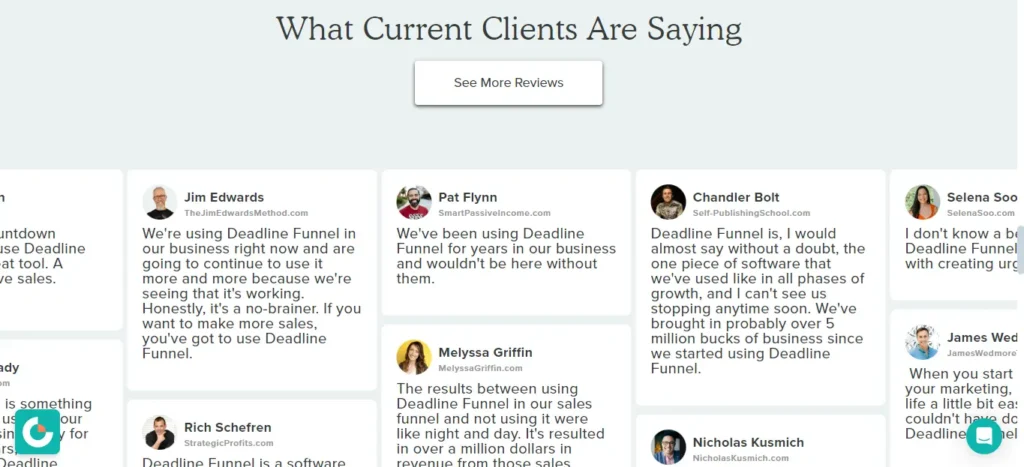
A great way to leverage the power of testimonials and reviews is to place them on your landing and product pages. This way, when potential buyers consider your product, they don’t have to search far to see what others are saying. It holds their attention and encourages them to take action faster. In addition, consider having your satisfied customers leave their thoughts about your company on multiple review sites like Google, Yelp, Capterra, etc.
Influencer Endorsements
Influencer marketing has been around for longer than most people can recall. However, unlike in the past, influencer endorsements these days aren’t limited to a chosen few celebrities. Today, anybody with a loyal following on social media is an influencer and can potentially help your brand build credibility by acting as a bridge between your offerings and potential customers.
Influencers have built a strong connection with their audience, making their followers more likely to trust their recommendations. So, when influencers share their personal experiences with your product, the endorsements feel more genuine and relatable than traditional ads.
That being said, not every influencer is right for your company. You should focus on partnering with influencers whose values and content match what your brand stands for. This will make the endorsement feel more authentic. You also don’t have to go after big-name influencers. Micro-influencers–those with around 10,000 to 100,000 followers–can often deliver more authentic endorsements and better engagement. This is because they tend to have a more niche, loyal following, making their recommendations feel more personal and their followers more likely to act on them.
Celebrity and Expert Endorsements
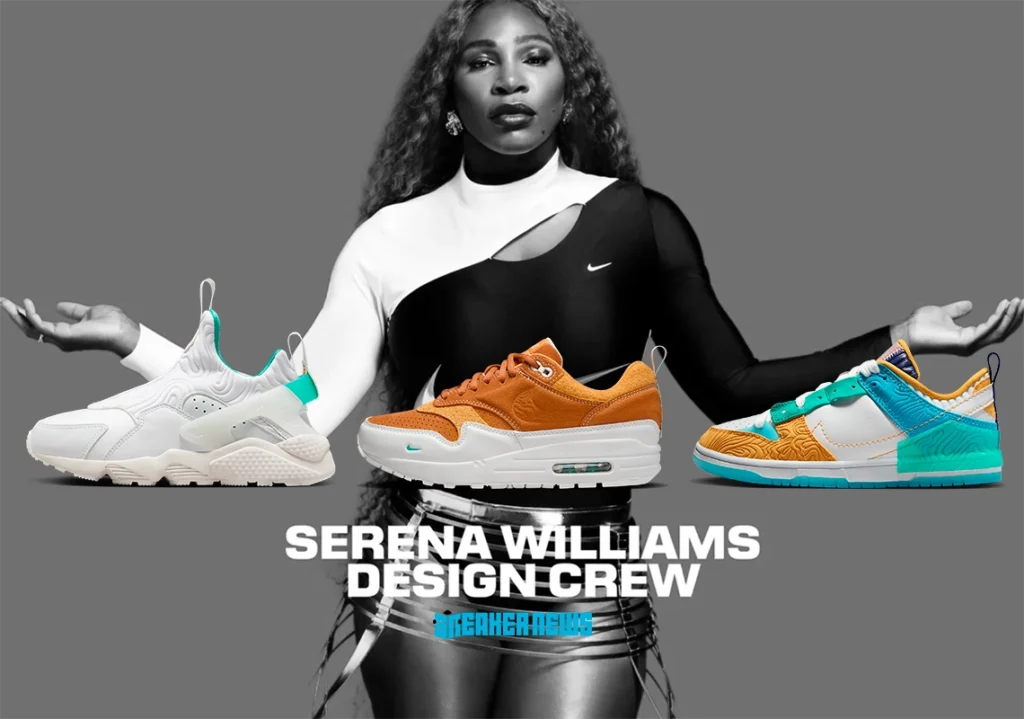
Source: https://sneakernews.com/2023/08/13/serena-williams-design-crew-nike-fall-2023-release-date/
Remember how you bought a bunch of skin care products because your favorite actress was the face of the brand or Air Jordans because of the basketball legend Michael Jordan? Well, that’s the magic of celebrity endorsements.
Endorsements from famous people or industry experts can significantly boost your brand image because when someone well-known and respected says a product is great, people are more likely to believe it’s true.
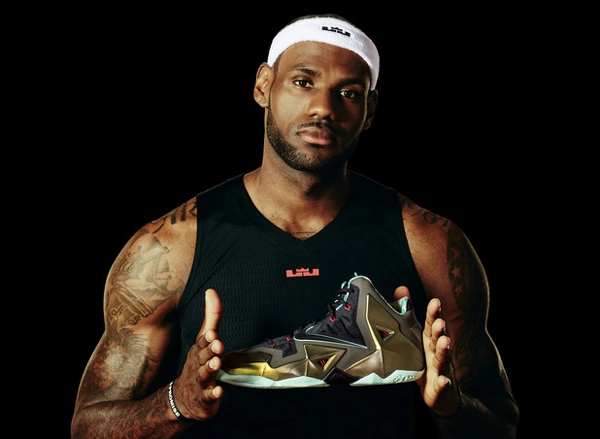
For instance, you might have noticed brands like Nike often collaborate with celebrity athletes to showcase their products. When top athletes like LeBron James or Serena Williams endorse Nike, it reinforces the brand’s image of high performance, quality, and success. This connection makes customers feel more confident in choosing Nike, thinking, “If it’s good enough for them, it’s good enough for me!”
Endorsements from experts, such as doctors or industry professionals, work similarly. Their knowledge and reputation make their opinions highly valued, giving your brand an added layer of credibility. For example, a skincare brand could use a dermatologist’s endorsement to reassure customers that their products are safe and effective.
When planning to team up with a celebrity or expert, make sure they are closely related to your product. An actress endorsing skincare products makes more sense than endorsing sports gear.
Case Studies
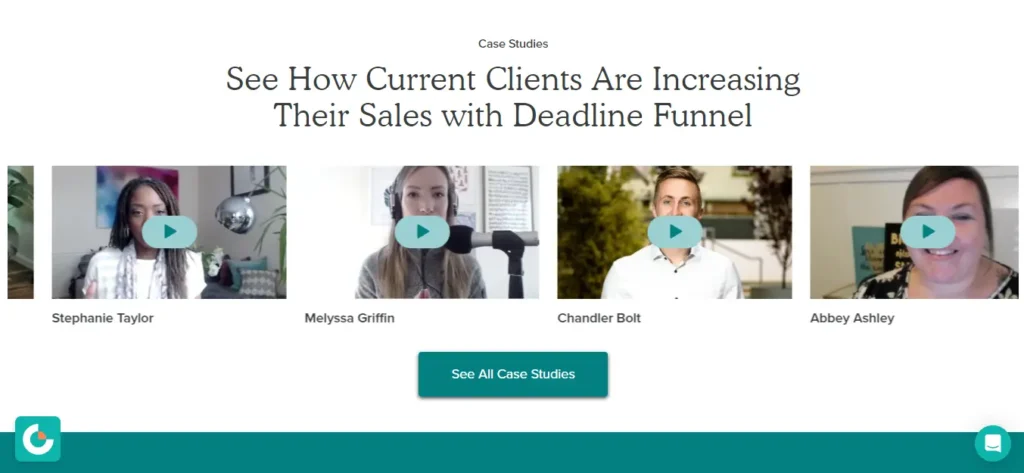
If you have extremely satisfied customers, you might want to consider asking them if they’re willing to be interviewed for a case study or customer success story.
Case studies offer detailed narratives of how a product or service helped solve a real-world problem. It goes beyond just saying, “This product is great!”. Instead, it walks you through the entire journey–from the initial challenge the customer faced to how your product served as a solution and, ultimately, the results they achieved. It’s like storytelling for businesses, and everyone likes stories. This makes it an amazing way to show potential customers that your product can deliver real, measurable success.
To create a case study, start with a problem, introduce your solution, and wrap up with positive results or measurable outcomes, such as increased sales, improved efficiency, reduced costs, etc. This logical flow makes it easier for readers to follow along. One way to make your case studies better is to use the customer’s own words as quotes throughout the write-up. You can also use tools like Canva to add images, charts, and infographics.This helps break up the text and make the data more engaging.
Once your case study is ready, make it downloadable as a PDF. This gives potential customers something they can refer back to and also serves as a handy lead-generation tool. You can offer the download in exchange for a visitor’s email address, which will help you build your contact list.
Social Media Proof
Social media proof is nothing but photos, videos, or stories your customers share about your brand or products on their social media handles. Even the shortest comment a customer leaves on your Facebook post can act as organic social proof, showing the world that others trust your brand. Even better, you can display your social media testimonials, likes, or shares directly on your product pages to build trust.
After all, 71% of consumers are more likely to purchase a product based on social media referrals. That’s a huge number, so it is worth tapping into its potential to drive sales.
Remember to always reply to comments and share user posts. This will show your followers that you care and encourage more conversations. The more engagement your brand has, the more credible it appears.
User-Generated Content (UGC)
UGC is any content on social media–like photos, videos, reviews, or blog posts–created by customers and not the brand itself. It’s one of the most genuine forms of social proof and feels authentic because it’s real people sharing their honest opinions.
For instance, imagine you have been thinking of whether or not to buy a specific Bluetooth speaker with amazing reviews on Amazon. Then, one day, you see your friend’s Instagram post about a Bluetooth speaker from a new brand she has come to love. While both are promising, you’ll probably buy the latter. This is because, to you, your friend is more trustworthy, and her opinion carries more weight in influencing you than the reviewers on Amazon. That’s the very principle behind UGC.
If your customers love your products, they’ll post them on social media without you asking. However, you can always give them small incentives for their loyalty and love, such as discounts or freebies. You might also want to consider creating a unique hashtag that your customers can use in their posts. This also makes it easier for you to track and share their content. Lastly, don’t forget to engage with users by liking, commenting, and resharing their content, as it will help foster a stronger community around your brand.
Awards and Certifications

If your brand has won awards or certifications, don’t hesitate to show off those achievements on your website. Whether it’s a quality assurance certification or an industry award, since these recognitions come from a third party, potential customers will trust what the awards tell about your brand more than what you say about yourself.
For example, seeing the “J.D. Power Awards,” given to companies that display excellence in their fields, and the “G2’s Best Software Products Awards” label on a website helps reassure potential customers they’re making a smart choice. It’s especially valuable for new or lesser-known brands trying to gain the trust of first-time customers.
If you’re wondering how to win an industry award, all you have to do is make great products and submit them for consideration. Here’s a list of international business awards you should consider applying for. You can learn how to craft a winning industry award submission here.
If you win, spread the word through your social media page, email newsletter, and blog. Also, place the badges in emails, social media posts, your homepage, product pages, and checkout pages so customers can easily spot them during their journey. Even better, place the badges near action buttons, such as “Buy Now” or “Checkout.” This can significantly increase conversions, serving as a final push for hesitant buyers.
How to Effectively Use Social Proof in Marketing
On Your Website
When visitors come to your website, they want to know if your product or service is worth their investment. So, showing them how happy your customers are with your products makes them more likely to make a purchase.
Beyond your landing and product pages, add reviews, testimonials, and ratings to your checkout process. This helps reassure potential customers and push them to take the final action, which is making a purchase.
In addition, you can add real-time purchase notifications, showing visitors what others are buying. For instance, “Sarah just bought X product.” This helps create a sense of urgency and shows visitors how others are actively buying your products, which, in turn, encourages them to take action.
In Email Marketing
According to studies, emails with social proof, such as customer testimonials, see a 15% higher open rate. This is because people trust what others say. They’re curious to see why a product is so popular.
When sending marketing emails, including feedback, short quotes from happy customers, or success stories can make a huge difference. Not only does it add a personal touch, but it also makes your emails feel more trustworthy.
On Social Media
Social media is a great place for brands to showcase how much their customers love their offerings. According to a study published on social proof in social media shopping, UGC can positively impact consumer behavior by creating trust and encouraging purchases.
However, instead of just posting clippings of user reviews and testimonials, have your customers post about your brand. You could have them share a photo of one of your products, a review, or even an unboxing video where they talk about your products. Once your customers share something about your brand, make sure you repost it on your social channels.
To take your social media game to the next level, consider running a hashtag campaign, encouraging customers to share their experiences. For instance, ask them to post pictures of themselves using your product with a specific hashtag. This will increase engagement and generate a more positive buzz about your brand.
.png)
Measuring the Impact of Social Proof
Now that you have taken all the necessary steps for incorporating social proof into your marketing strategy, the only thing left to do is measure its impact. You can either do it manually by tracking specific key metrics or by using specialized tools that analyze how your social proof is influencing customer behavior.
Key Metrics to Track
When it comes to metrics, there are various aspects you could track, like engagement rates (likes, shares, and comments), conversion rates, and click-through rates to measure the impact of social proof.
Engagement Rate
Likes, shares, and comments are direct indicators of how well your content resonates with your audience because it shows how much people are interacting with your posts. Typically, likes and shares indicate how many people approve of your content, while comments suggest deeper engagement since people are taking the time to express their thoughts and share their experiences. But at the end of the day, the higher the engagement, the more people trust your brand and are willing to engage with it.
Conversion Rates
Conversion rates are the average number of people who took a desired action, such as making a purchase, paying for a subscription, signing up for email newsletters, etc., after interacting with social proof. For instance, you can start monitoring the number of visitors who ended up purchasing a product after you started displaying customer testimonials on the product page. If the conversion rates improve, it suggests that your social proof has been successful in convincing customers to trust your brand.
Click-Through Rates (CTR)
CTR is the ratio of visitors who clicked on links in your content to those who just saw the content. If hyperlinks were part of your content, a higher CTR shows your social proof was compelling enough for users to want to learn more or take action, such as visiting your product page or signing up for your newsletter.
Tools for Analysis
Beyond these metrics, you can use tools like Trustpilot or Google Analytics to measure the influence of social proof on your overall sales and engagement.
- Trustpilot – It is a popular platform that allows you to gather ratings and feedback from customers and display those directly on your website. You can also respond to reviews on Trustpilot, which, in turn, helps boost your brand’s credibility.
- Google Analytics – You can track specific metrics on Google Analytics, such as conversion rates, session duration, bounce rates, etc., which helps you understand how social proof influences visitor behavior on your website.
- Hotjar – Hotjar offers heatmaps and session recordings, allowing you to understand how users navigate your website. If you have placed reviews or testimonials on key pages, the platform will show you if these elements are affecting visitor behavior, such as whether the users are spending time reading the reviews before purchasing.
Brands Effectively Using Social Proof
Brands all across the globe have been leveraging the power of social proof to build stronger connections with their audiences and influence customer decisions. Here are two companies that have effectively used this strategy in their campaigns to boost engagement and trust.
Example 1: Glossier Leveraged UGC to Create a Cult Following
Glossier is a beauty brand known for its minimalist products. However, beyond minimalism, it is also quite popular for how it uses UGC.
Years ago, when Glossier was a relatively new brand competing in the crowded beauty industry, it needed a way to stand out and gain consumers’ trust. They didn’t want to rely heavily on advertising campaigns to prove their products could deliver real results. They decided to turn to their community of loyal customers, who later proved to be their best marketers.
The brand encouraged users to share their experiences on Instagram using the hashtag #Glossier. These posts, featuring real customers using Glossier products in their everyday routines, were reshared by the brand on their official account and website. This made the brand feel more authentic and approachable, and as a result, Glossier’s Instagram followers grew rapidly.
Glossier became one of the fastest-growing beauty brands, largely due to its community-driven marketing strategy. Today, the brand is worth over $1.8 billion, showing how powerful user-generated social proof can be in building a loyal customer base.
Example 2: Coca-Cola’s Share a Coke Campaign
Coca-Cola is a global beverage brand that has never failed to maintain its leadership position. One of its most successful campaigns, “Share a Coke,” not only generated massive social proof but also pushed people to interact more with the brand.
The campaign involved printing popular first names on Coke bottles and cans, encouraging customers to find bottles with their or their friend’s names, and sharing pictures on social media using the hashtag #ShareACoke. It quickly became a global phenomenon as people turned into Coca-Cola’s brand ambassadors, sharing 500,000 photos of their personalized Coke bottles on social media. The beverage brand was also able to increase its sales by 2% in the US alone.
Conclusion
Now that you have read the entire article, you know there’s no denying that social proof can be the key to successful marketing campaigns and higher ROI. It is something that can add a human element to your brand, which can, in turn, build trust with potential customers. After all, people trust people. So, the more satisfied customers, influencers, experts, and celebrities speak for you, the more potential consumers will be willing to give your brand a chance.
Start leveraging social proof today and watch your brand go to new heights!

